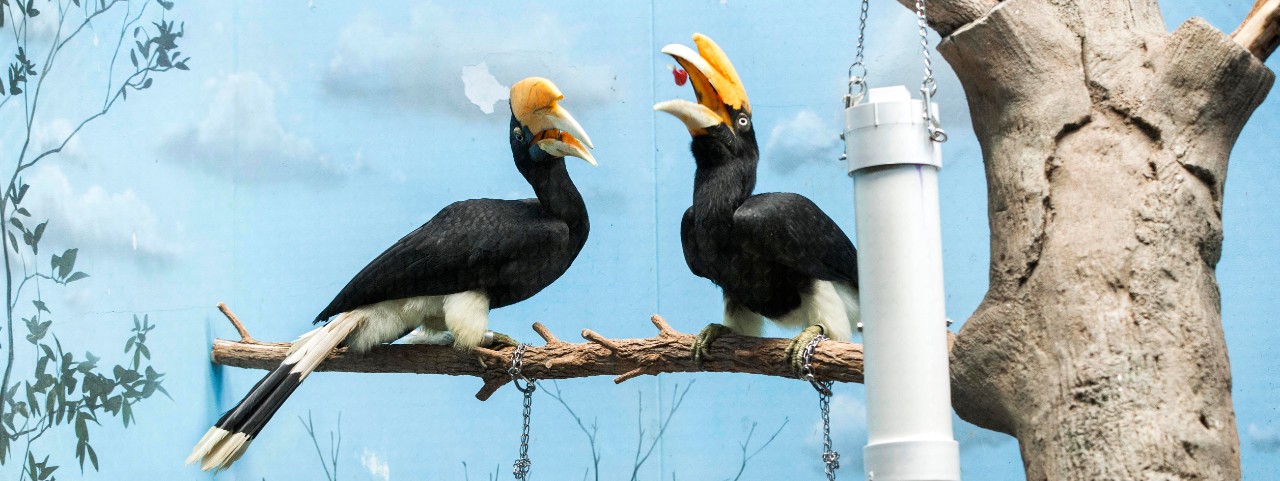
UC students test wits of zoo animals with enrichment
Students from colleges across campus partner with the Cincinnati Zoo & Botanical Garden to create enrichment opportunities for big cats and other animals
How do you engage a tiger?
University of Cincinnati students answered the unusual question for an honors class that helped the Cincinnati Zoo & Botanical Garden provide behavioral enrichment for its animals.
Teams of UC students were tasked with coming up with puzzle boxes, interactive feeders and other devices that would stimulate curiosity, engagement or activity in the animals.
Students worked with the zoo’s experts to get insights on the personalities and behaviors of the selected animals. And they had a chance to observe the animals in their habitats to inspire their designs. Then they went to the drawing board to come up with ideas.
The project demonstrates UC's commitment to making an impact in Greater Cincinnati as outlined in its strategic plan, Next Lives Here.
That is one of the best things about being a designer — seeing an idea through to completion and watching it succeed.
Lara Koenick, UC design student
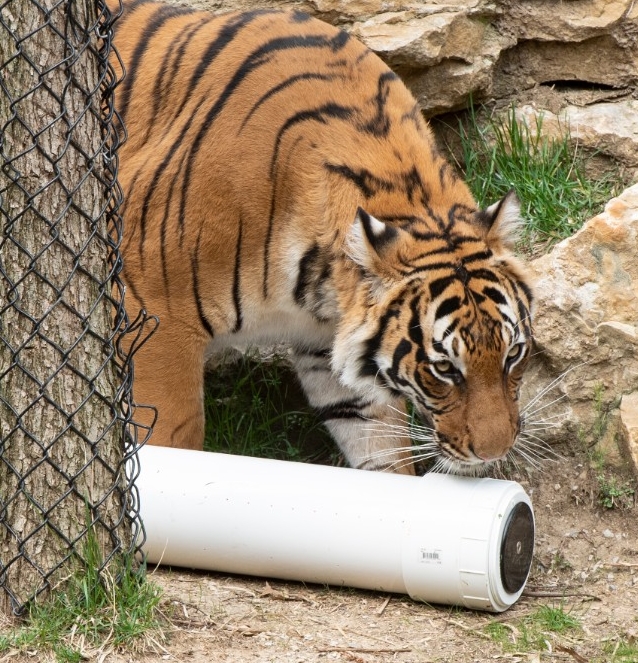
A Malayan tiger inspects a UC enrichment device. Photo/Colleen Kelley/UC Creative Services
The class is sponsored by UC Forward, an initiative that lets students put what they learn in the classroom to practical use through collaboration with outside partners such as nonprofits or private industry.
UC students Garrett Krueger, Deepansh Pahwa and Zach Fickenworth wanted something that would engage a tiger’s many acute senses. Initially, they designed a gyroscope that would go inside a big rubber ball the tigers could chase. But the logistics proved too daunting by the construction deadline, said Frank Russell, director of UC Forward and an associate professor who teaches the honors class.
Instead, they came up with a device that would engage the tigers’ hearing, vision and incredible sense of smell. Zoo team leader Michael Land placed the device in the outdoor habitat near a waterfall and let the animals out to explore.
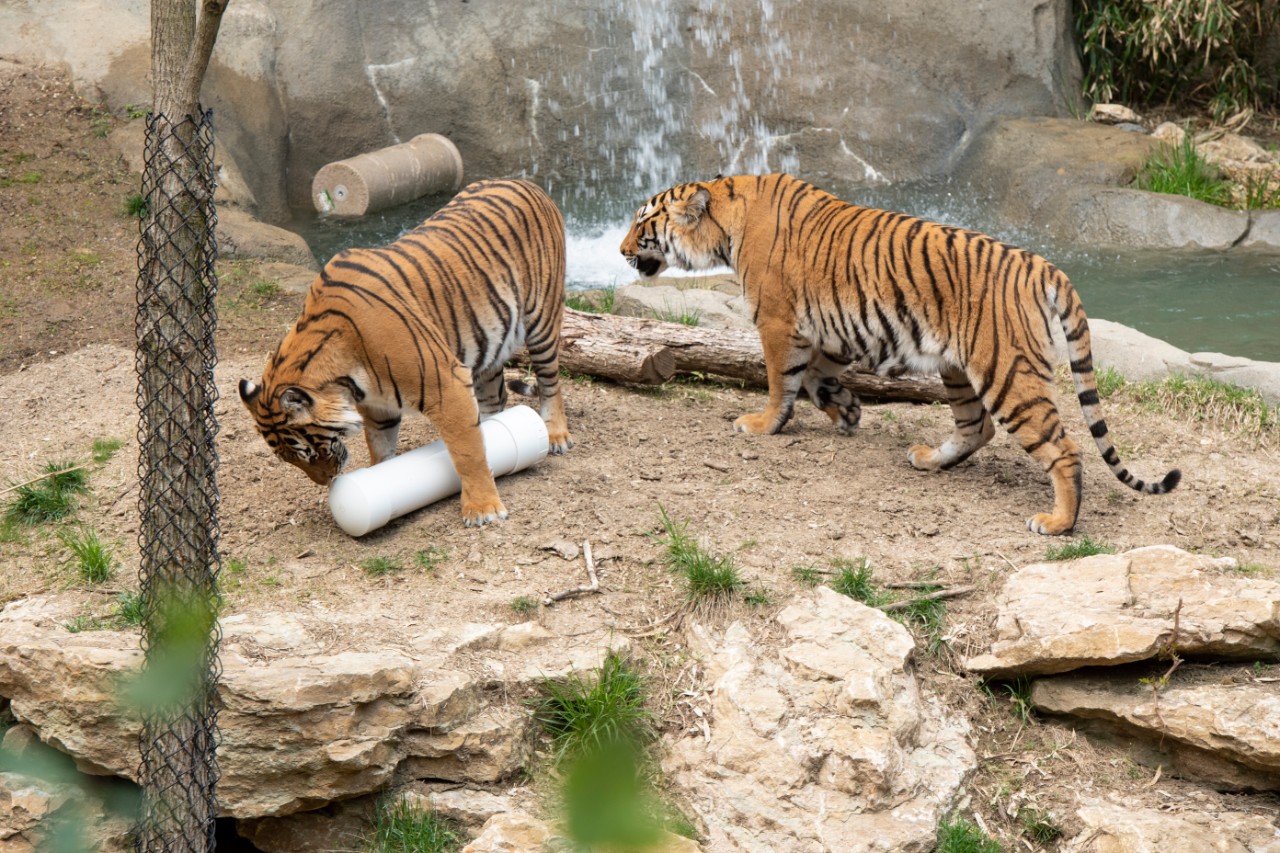
Malayan tigers paw at a device that plays music and contains lights at the Cincinnati Zoo & Botanical Garden. Photo/Colleen Kelley/UC Creative Services
The Malayan tigers filled the doorway, first one massive striped head and then another, her sister. Both tigers trotted with purpose to investigate the strange new object next to their artificial pond. It was a white tube with brilliant lights shining through tiny holes in its plastic surface. And it was making noise.
“It means no worries
For the rest of your days
It's our problem-free philosophy
Hakuna Matata!”

Cincinnati Zoo & Botanical Garden team leader Michael Land, left, listens as UC students Garrett Krueger, middle, and Zach Fickenworth explain the features of their enrichment device they designed for the Malayan tigers. The device has speakers, embedded lights and a storage core for different scents. Photo/Colleen Kelley/UC Creative Services
The tigers circled the tube and pawed at it, first from one end and then the other. One crouched and sniffed, opening her maw to exposing three-inch canines to take in any telltale scents. Unsatisfied, she continued to swipe at the tube until she knocked it down a hill.
The animal care team declared the the enrichment device a success.
The tube contains a speaker from which zoo staff can play animal sounds or Disney soundtracks. And it is dotted with holes exposing colorful light-emitting diodes. And the coup de grace: a core where zookeepers can place enticing scents. The students brought cinnamon, catnip and Calvin Klein’s Obsession cologne.
“Often our partners want something that is a bit outside the box. When you’re dealing with the private sector or other organizations, they’re working on a time clock. There is only so much they can do,” Russell said.
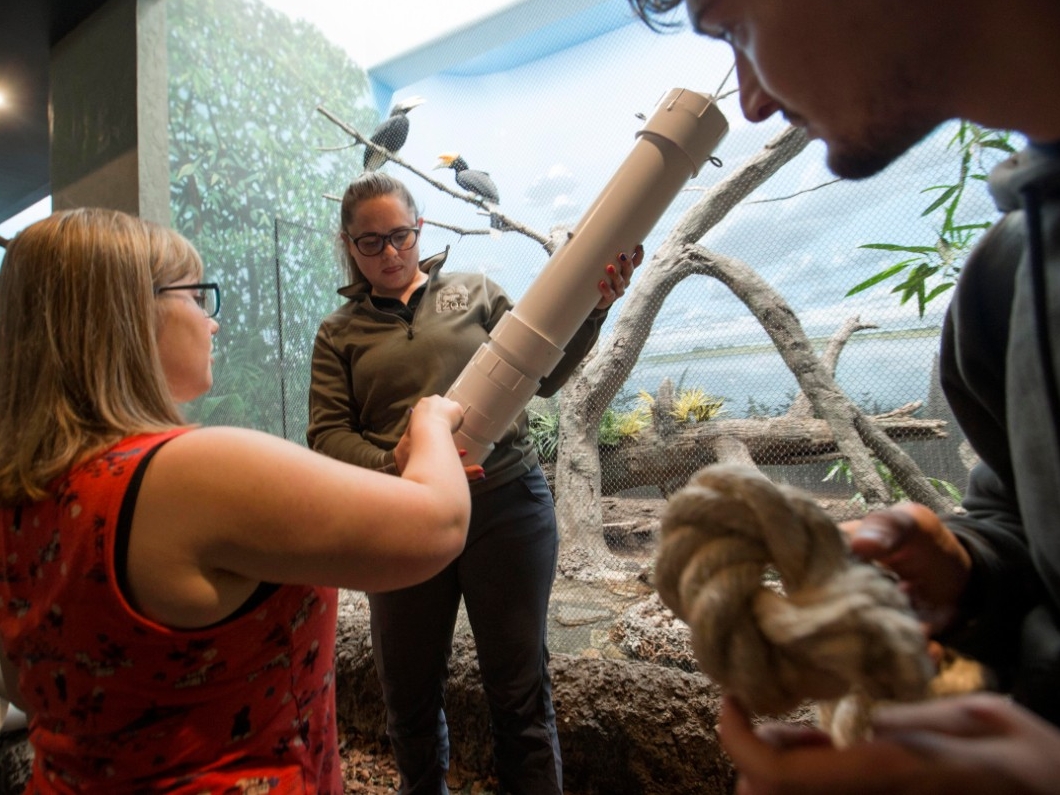
UC students show a zoo staff member their enrichment device designed for the rhinoceros hornbills at the Cincinnati Zoo & Botanical Garden. Photo/Joseph Fuqua II/UC Creative Services
By enlisting the help of enthusiastic university students who see unlimited possibilities, organizations can benefit from original and creative ideas, he said. The teams consist of students from colleges across campus in diverse majors such as communications, biology, design, accounting and aerospace engineering.
“The zoo thought that there was an opportunity here for the university to look at animal enrichment in a multidisciplinary way,” Russell said.
“It would have been possible to make this a capstone project in mechanical engineering. But you wouldn’t have gained the richness of unusual approaches to the problem,” Russell said. “Bringing those different disciplines together is an important part of its success.”
Russell, an architect by training, said the design aspects of the projects especially resonate with him. But students must come up with ideas and mock-ups, draft a budget, order materials and assemble their creations within a prescribed timeline, teaching important project management skills.
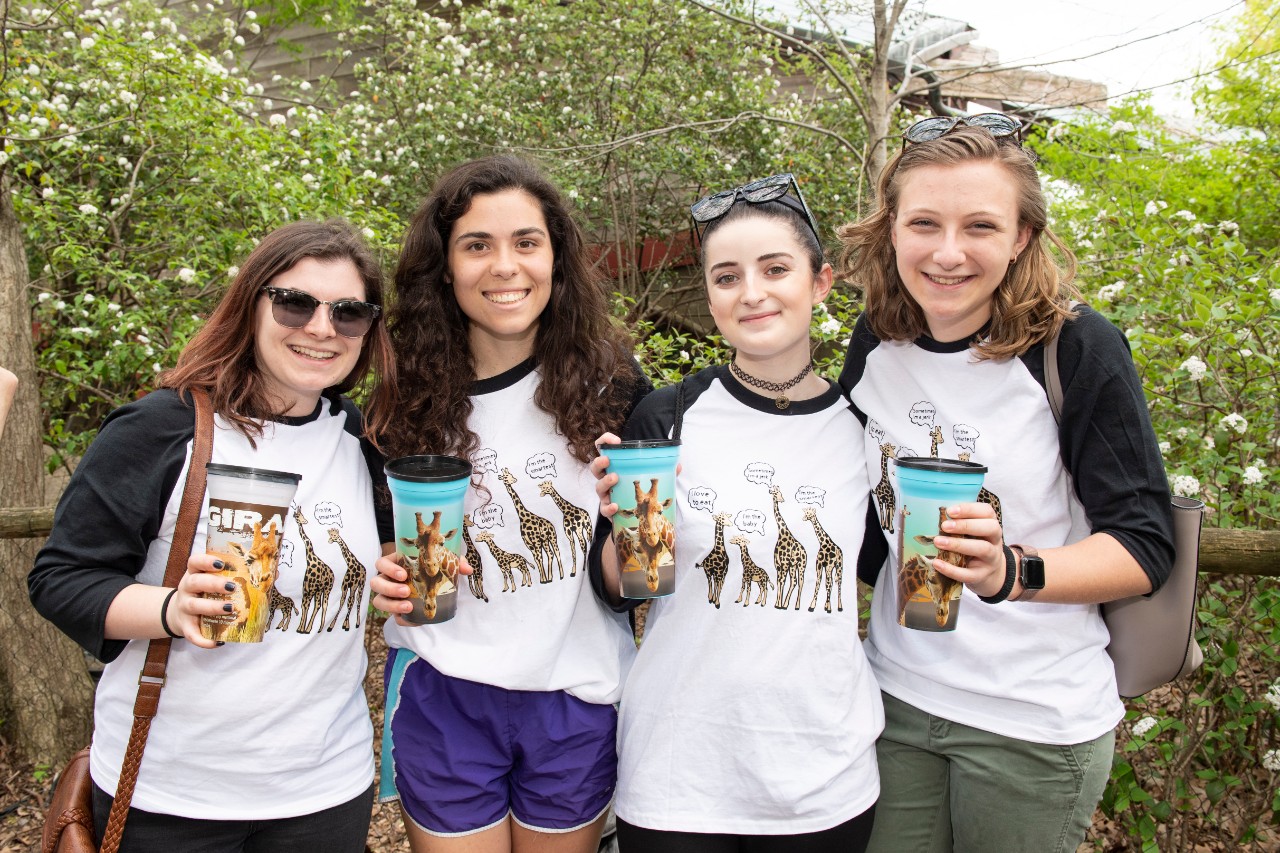
UC students wear custom T-shirts celebrating their giraffe-enrichment project at the Cincinnati Zoo & Botanical Garden. Photo/Colleen Kelley/UC Creative Services
UC students Olivia Loparo and Adina Ballaban helped design a browse box for giraffes. The box was made of smooth half-inch Plexiglas with round holes blocked by wiffle balls. To reach the food rewards — leafy foliage, herbivore biscuits or grain — the giraffes have to reach high up and push the balls out of the way with their giant purple tongues to probe the box.
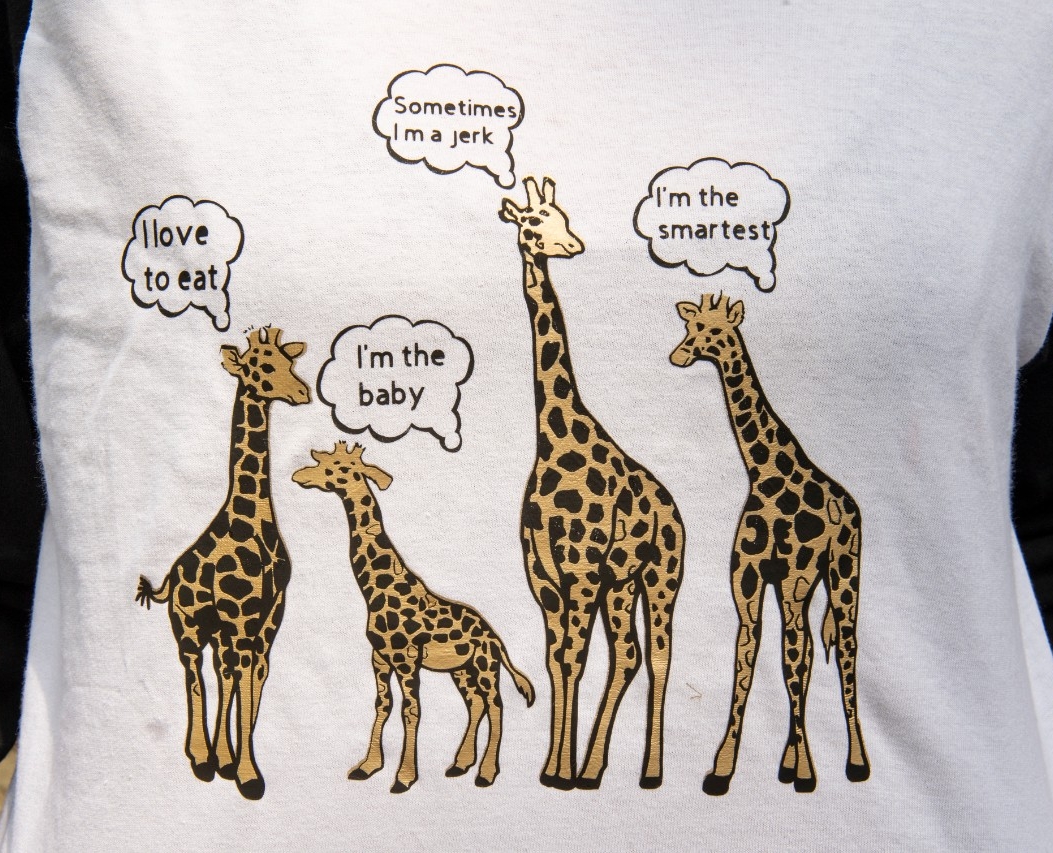
The student's T-shirts depict the personalities of the zoo's giraffes. Photo/Colleen Kelley/UC Creative Services
The clear box also gives visitors a chance to see the giraffe’s famous prehensile tongue at work, they said.
The students wore custom giraffe-team T-shirts for the inaugural demonstration.
“It was fun to work as a group. Everyone brought their own skill set, which didn’t necessarily relate to their college or major,” said Ballaban, a biology student in UC’s McMicken College of Arts and Sciences.
The Plexiglas box had to be both durable and safe with no sharp edges or pinch points, she said.
“We had to rout it and sand it and use a Dremel tool,” Ballaban said. “It has to be baby-proof.”
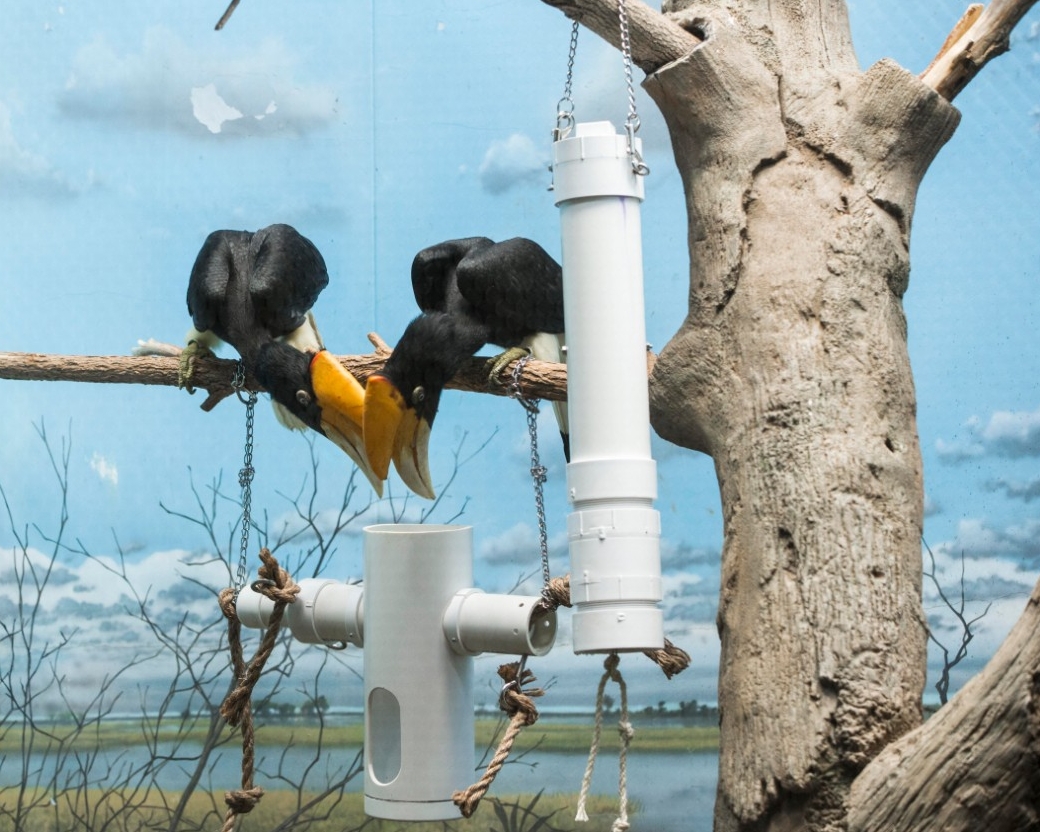
Rhinoceros hornbills inspect a PVC pipe game in their habitat. The birds were supposed to pull on the ropes to get grapes to drop out the bottom. Instead, the clever birds manipulated the pipes in the insertion chamber to reach the tasty reward. Photo/Joseph Fuqua II/UC Creative Services
Zoo staff inspected each device and quizzed the team members on the parts and materials to make sure they were safe and nontoxic for the animals. And then they placed the enrichment devices in the exhibits to see what would happen.
UC teams came up with two clever games for the zoo’s beautiful rhinoceros hornbills, turkey-sized birds that inhabit the rainforest canopy in parts of Asia. A puzzle device contained pipes within pipes to hold grapes that would drop into a feeding trough if the birds correctly manipulated strings on either side.
“The birds have to line them up so the food drops into the bottom. So hopefully the birds will figure it out. If they can’t, we can always simplify it,” UC student Justin Meyer said.
The students studied the birds in depth to learn about their abilities and natural behaviors.
“In the wild, they’ll forage or crack open trees to get to food. Since we know the birds are smart, we wanted to challenge them, so we did a food device,” UC student Bradley Davidson said.
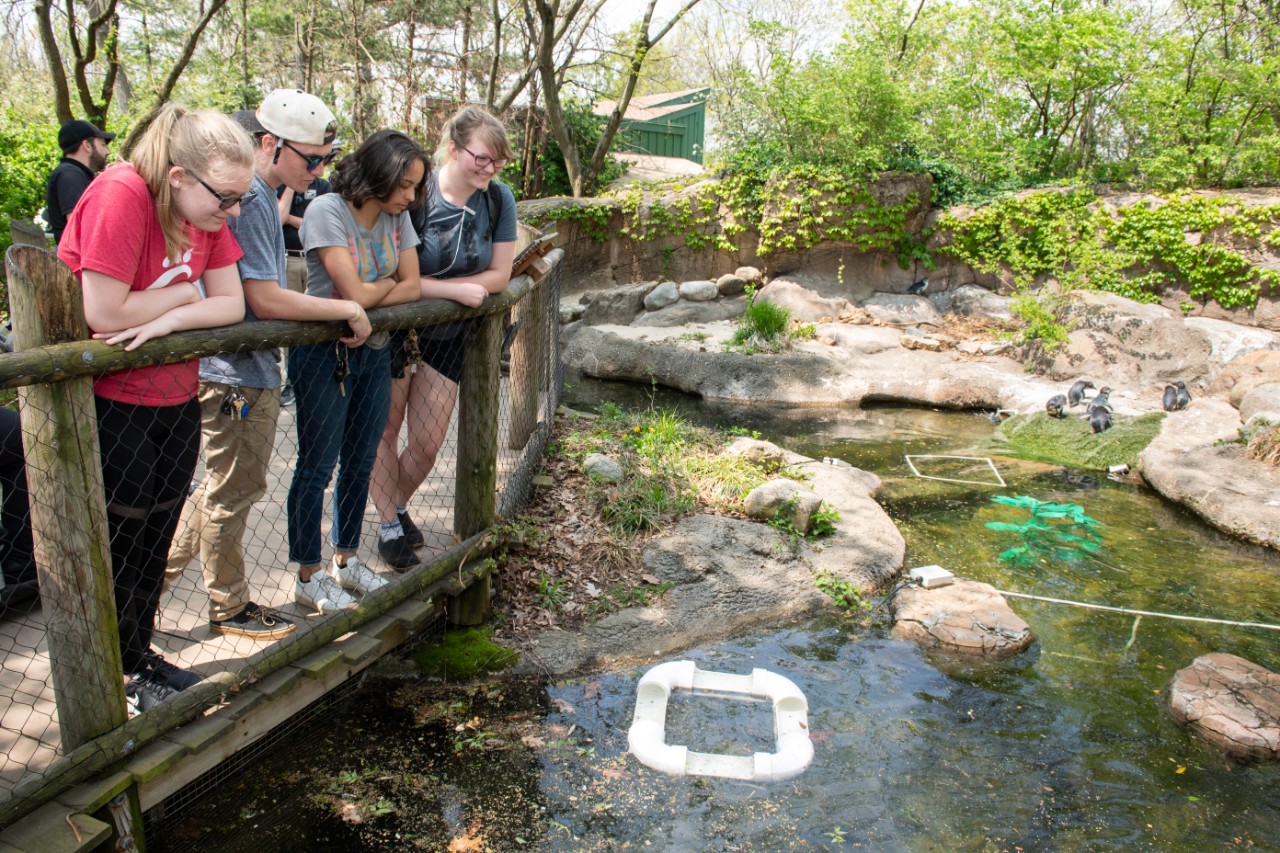
UC students stand over the little penguin exhibit where they have placed a square feeder trough. The little penguins on the opposite bank kept their distance. It takes time for them to get accustomed to anything new in their habitat, zoo staff said. Photo/Colleen Kelley/UC Creative Services
The students cheered when the first nervous bird flew over to inspect the device. And then they laughed when the hornbill outsmarted the device by using its long bill to spin the pipes manually through the top feeder slot to pluck out each delicious grape, no strings required.
Another team made a pipe waterfall for the hornbills.
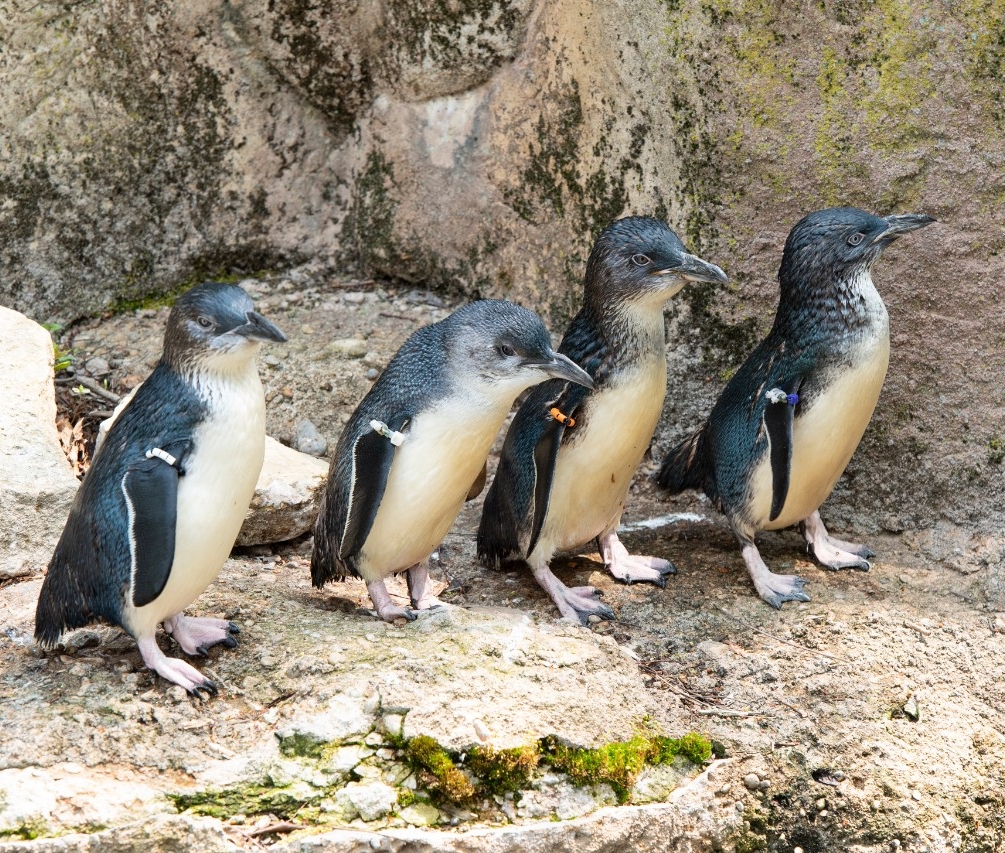
Little penguins. Photo/Colleen Kelley/UC Creative Services
“We learned the hornbills really like water. They’re rainforest birds. They like to be out in the rain. It’s something they really enjoy so we wanted to bring that into their habitat,” UC student Jordan Perrin said. “The keepers said when they clean the exhibit, the hornbills’ favorite game is to jump in front of the water hose. So we’re trying to figure out how to bring that joy to their interior habitat.”
The waterfall pipe contains a reservoir that fills up and dispenses a refreshing spray of water when a bird pulls on a string at the bottom. Without an obvious food reward, the device would take a little experimenting by the birds. But the students said they were confident the smart creatures would figure it out.
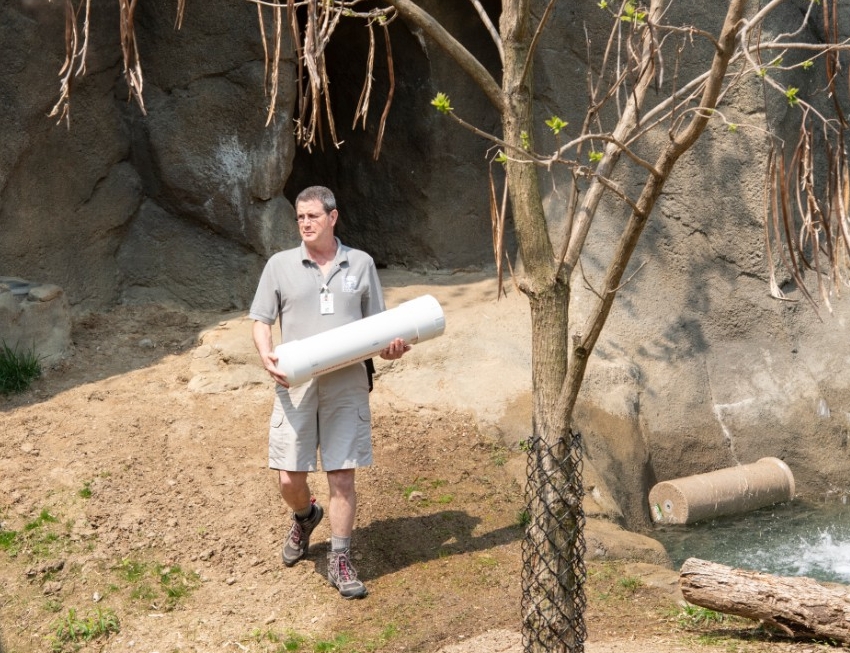
Cincinnati Zoo & Botanical Garden team leader Michael Land places a UC enrichment device in a habitat for Malayan tigers. Photo/Colleen Kelley/UC Creative Services
The zoo routinely provides enrichment for its animals. Sometimes, it means hiding food in different places in the exhibit or exposing the animals to unusual scents like peppermint.
“Enrichment is absolutely important to all the animals at the zoo,” said Cody Sowers, a senior aviculturist at the zoo. “We want to keep them mentally and physically stimulated.”
One UC team came up with a faux kelp forest and floating fish feeder for the zoo’s aptly called little penguins. Both are designed to entice the diving birds to stay in the water longer.
“We want the penguins to be in the water as much as possible,” Sowers said. “But for little penguins, it’s a challenge because in a zoo they don’t really need to swim. The food shows up for them.”
Sowers said the UC program is a good fit because it gives students complex problems to solve for the benefit of the zoo’s animals.
“I think it’s fantastic. I’m really stoked. I think it’s such a cool experience for keepers and zoo staff and for the students themselves,” he said.
Giraffe team member Lara Koenick, a student in UC’s College of Design, Architecture, Art, and Planning, said she loved working on the novel browse box.
“That was one of the best things about being a designer — seeing an idea through to completion and watching it succeed,” she said.
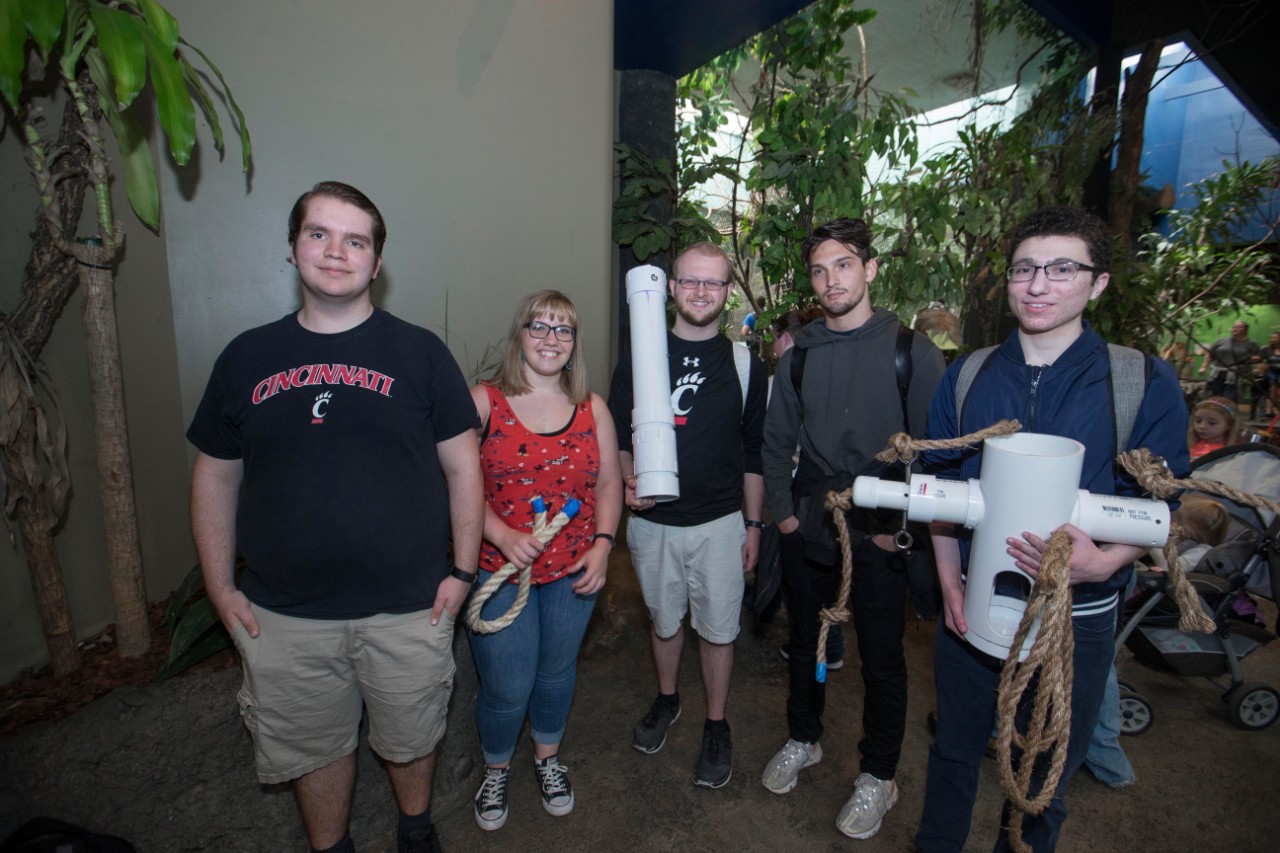
University of Cincinnati students show off their enrichment devices inside the World of Birds exhibit at the Cincinnati Zoo & Botanical Garden. Photo/Joseph Fuqua II/UC Creative Services
Next Lives Here
Discover UC's commitment to Next Lives Here, the strategic direction with designs on leading urban public universities into a new era of innovation and impact.
Become a Bearcat
Apply online or get more information about undergraduate enrollment by calling 513-556-1100. Learn more about UC's many undergraduate and graduate programs.
Related Stories
UC celebrates record spring class of 2025
May 2, 2025
UC recognized a record spring class of 2025 at commencement at Fifth Third Arena.
‘Doing Good Together’ course gains recognition
May 1, 2025
New honors course, titled “Doing Good Together,” teaches students about philanthropy with a class project that distributes real funds to UC-affiliated nonprofits. Course sparked UC’s membership in national consortium, Philanthropy Lab.
DAAPworks reveals 2025 Innovation Awards – discover the winning...
May 1, 2025
Visionary projects stole the show during DAAPworks 2025, from wayfinding technology for backcountry skiers to easy-to-use CPR training kits for children.
